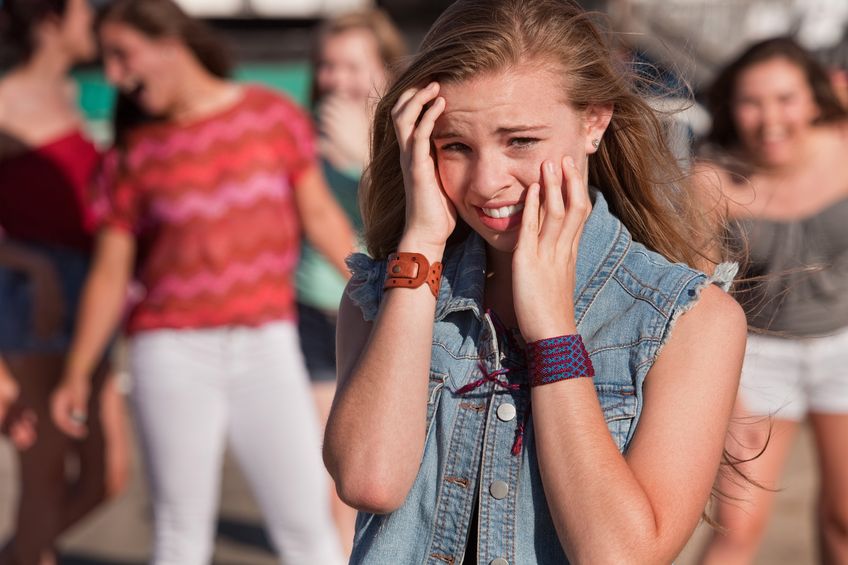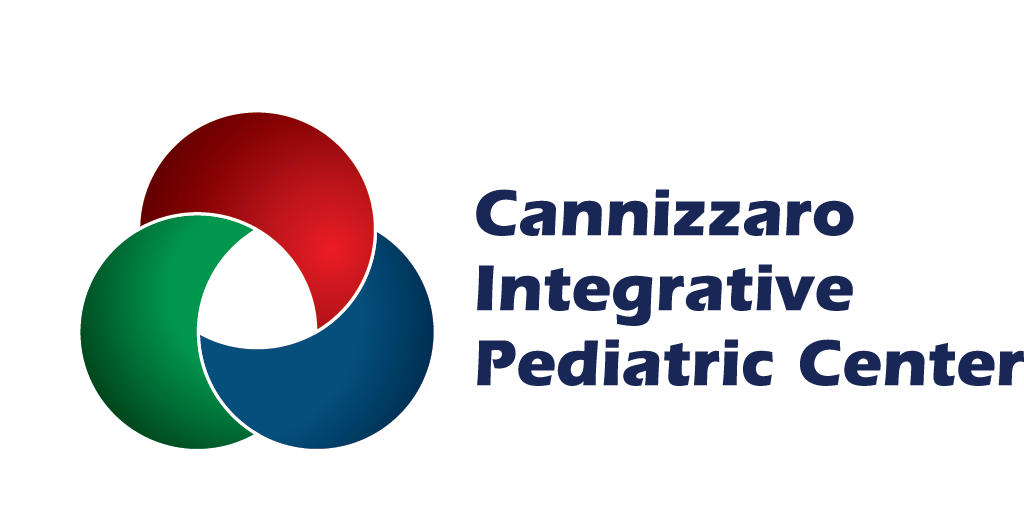
Social Anxiety Disorder (also called social phobia) is an intense fear that a person has of being judged, evaluated negatively, or being seen poorly by others. This is an irrational fear, not just embarrassment. This level of fear inflicts high anxiety and causes a person to withdraw from social situations. The increase in social gatherings during the holiday season may highlight the trauma of Social Anxiety Disorder for a child and his family. We compiled this article so that parents (along with their health care practitioners) can successfully diagnose, treat and support a child with Social Anxiety Disorder.
Recognizing Social Anxiety Disorder in Children
Social Anxiety Disorder is not easily recognized. It is not something that suddenly happens. Often, the disorder progresses over time. Preschoolers can be diagnosed with Social Anxiety Disorder, but it often becomes more apparent during the teenage years. Children may be labeled “shy” or are able to avoid social situations like parties by saying they have something else to do, or by playing sick. Social anxiety may show up in adolescence because children become more self-aware and begin to feel peer pressures and other evaluative pressures in their teenage years. Adult patients can often track their social anxiety back to an early trauma, like an embarrassment at school. Social Anxiety Disorder can also be genetic and run in a family. It is statistically more prevalent in women than men.
A child may be exhibiting social anxiety if he or she:
- Often avoids social situations
- Does not make eye contact
- Will not make phone calls
- Does not participate in class or volunteer to answer questions
- Doesn’t want to be in the school play, join extracurricular groups, or go on a class field trip
- Has panic attacks: sweats, shakes, trembles or vomits if forced to do something with others that she doesn’t want to do
- “Acts up” so that he is not forced to participate in an activity
How do you know if a child is just shy—that it’s a true personality trait? A shy child will “come out of her shell”: warm up, get comfortable, and interact more—as they get to know you. A child experiencing social anxiety does not acclimate. The child experiences intense anxiety and “warming up” does not reduce this. Some parents may not recognize Social Anxiety Disorder because they are that way themselves. It looks like a choice to them, depending on how severe it is. There are also age-appropriate expectations to gauge how much a child’s “shyness” gets in the way of everyday life. For example, a 15-year-old who won’t order for herself in a restaurant may be experiencing Social Anxiety Disorder.
The Difference Between Social Anxiety Disorder and Learning Disorders
Since the avoidance of social situations will often be marked first by a child’s teacher, it’s helpful to know the difference between learning disorders and Social Anxiety Disorder. The main difference is that a child experiencing Social Anxiety Disorder is still learning and still doing well in school, often getting high grades. But there is a lack of participation in group activities. The teacher will notice that the child withdraws from the group and appears anxious. A child with social anxiety will still do her homework because that does not require social interaction.
A child with learning disorders often will not do his homework because he does not understand the work, has a problem with reading comprehension, or some other learning struggle. Refer to our article about learning disorders in kids for more information.
Diagnosing Social Anxiety Disorder with Integrative Medicine
Aside from identifying outward symptoms of Social Anxiety Disorder, your integrative pediatrician can also evaluate your child’s “ecosystem” to determine factors that may cause or compound the disorder. There are six realms of evaluation that our integrative medicine practitioners use to assess a child’s health and identify these contributing factors.
1) Environmental
- The physical environment: beauty, noise, air and water quality
- Toxins: mercury, lead, pesticides, allergies, air pollution, amount of sunlight, crowded conditions
2) Physical
- Family health history, including mental illnesses
- Diet and supplement use: affects nutrition, brain development, food allergies, gut issues
- The child’s history of illnesses and use of medications
- Amount of sleep and exercise, which factor into stress management
- The child’s strength, flexibility and energy
3) Emotional
- Whether the child exhibits an overall positive or negative emotional tone
- Regulation of emotions: ability to experience pleasure, love, grief, anger
- Trauma history or history of abuse or neglect
- Freedom from chronic fear or sadness
- Capacity to forgive
- Emotional love between the parents, supportiveness and acceptance
4) Mental
- Psychology of resilience, perseverance, grit
- Self-confidence vs. self-doubt, optimism vs. pessimism
- Locus of control, active engagement vs. passive avoidance
- Humor, intellectual challenge and stimulation
- Assess school fit: poor fit can lead to failure, despair, and psychiatric symptoms
- Level of perceptiveness and self-awareness
- Sensitivity, memory and processing speed
5) Social
- Number, variety and depth of relationships: intimate and confiding vs. mere acquaintances
- Child is isolated or well-connected
- Degree of trust and openness with friends: barometers of social skills
- Probe level of emotional stability, safety, satisfaction in primary relationships
- Relationship with neighbors, family, friends, coaches, teachers
6) Spiritual
- Ask about their sense of meaning and purpose in life: Do they have a spiritual practice, feel connected to a higher power? Do they pray?
- Regular participation and active practice of the family.
- Role modeling is the most critical step for parents. We must explain that we are all spiritual beings in many varieties of form and expression and we need spirituality to be healthy.
The Treatment for Social Anxiety Disorder
If you think your child has Social Anxiety Disorder, get professional help for a proper diagnosis and treatment. Intense cases may need medication, but most children can be helped naturally. Cognitive Behavioral Therapy addresses irrational beliefs and helps shift your child’s thinking so that behaviors change. Neurofeedback is a treatment that decreases anxiety by training the brain to be more calm and to respond more effectively and appropriately to situations. Your holistic pediatrician can recommend the proper diet and nutrition to help with any imbalances in the gut, brain, or hormones that may be lending to your child’s symptoms. You can also get advanced lab testing, supplements and referrals to qualified mental health practitioners, counselors and helpful sources of education.
Coping with Social Anxiety Disorder During the Holidays
There are some specific ways to support a child with Social Anxiety Disorder, especially during the holidays. Avoiding social situations, while seemingly compassionate, is the worst thing you can do. Allowing your child to avoid social situations is counter-productive. Helping them to cope is better.
Arrange for Emotional Support: Engage the help of a friend or relative who the child feels safe with. Ask the helper to accompany the child during the activity, sit next to the child and gently bring the child into the conversation or activity. This takes social pressure off the child.
Choose Your Words: Let the child know what to expect, but don’t accidentally reinforce anxiety by telling her “everything will be OK”. Your insistence on this point may give her the impression that there’s a reason to feel that it may NOT be okay. Instead, give her a rundown of what will happen. Speak matter-of-factly and casually. “We will go to grandma’s for dinner. She baked your favorite pie.” “We will open presents and you can sit right next to your brother.” “You’ll see your cousin, Susie. You two got along great last year—she’s looking forward to playing with you again.”
Give the Child an Activity or a Distraction: Ask the child to help in the kitchen, or to wrap a gift. This gives the child a break from all the people and holiday commotion.
Knowing the facts about Social Anxiety Disorder can help parents identify it early in their child, before it becomes progressively worse and affects their career opportunities, the health of their adult relationships and their overall quality of life. If you have any concerns, please contact our staff, and we will direct you to the proper resources for your child.
Special thanks to Sharon R. Thetford, Psy.D., who answered all our questions about Social Anxiety Disorder. Dr. Thetford has over 26 years of clinical private practice experience and is founder of New Objectives Psychology, Counseling & Neurofeedback Center located in Altamonte Springs, FL. Dr. Thetford treats both children and adults, providing psychotherapy, 8-week parenting classes, cognitive behavioral therapy, neurofeedback, and EMDR (eye movement desensitization and reprocessing) therapy. Contact her office at: 407-339-1159





